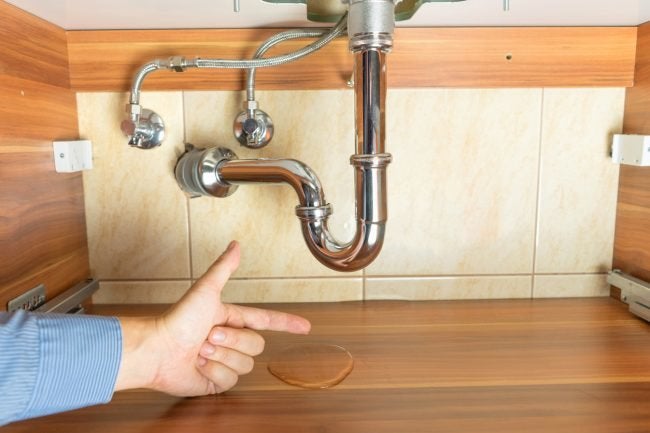Are you currently looking for critical information on Locating water leaks?

Early discovery of dripping water lines can alleviate a possible disaster. Some little water leakages may not be visible.
1. Analyze the Water Meter
Every residence has a water meter. Inspecting it is a proven way that assists you uncover leakages. For starters, shut off all the water sources. Guarantee nobody will purge, use the faucet, shower, run the washing machine or dishwasher. From there, go to the meter and watch if it will certainly transform. Since no one is using it, there should be no motions. If it relocates, that shows a fast-moving leak. Furthermore, if you discover no changes, wait a hr or 2 and inspect back once more. This suggests you might have a slow-moving leak that can also be underground.
2. Examine Water Consumption
If you spot sudden modifications, regardless of your intake being the same, it implies that you have leaks in your plumbing system. A sudden spike in your bill shows a fast-moving leak.
A constant rise every month, also with the very same routines, reveals you have a slow-moving leak that's additionally slowly rising. Call a plumber to extensively check your home, specifically if you really feel a warm location on your flooring with piping underneath.
3. Do a Food Coloring Test
When it involves water consumption, 30% originates from commodes. Examination to see if they are running appropriately. Decline specks of food shade in the container as well as wait 10 minutes. There's a leak in between the tank and also dish if the shade somehow infiltrates your dish during that time without flushing.
4. Asses Exterior Lines
Don't fail to remember to check your exterior water lines too. Ought to water permeate out of the connection, you have a loose rubber gasket. One tiny leak can throw away lots of water and also spike your water expense.
5. Examine the scenario and examine
Home owners should make it a habit to check under the sink counters and also inside cupboards for any type of bad odor or mold growth. These 2 red flags show a leakage so punctual focus is required. Doing regular assessments, also bi-annually, can save you from a significant issue.
Check for stainings and also weakening as many pipelines and home appliances have a life expectations. If you suspect dripping water lines in your plumbing system, do not wait for it to rise.
Early detection of leaking water lines can reduce a prospective calamity. Some tiny water leakages might not be visible. Examining it is a surefire method that helps you uncover leaks. One tiny leakage can throw away heaps of water and surge your water bill.
If you think leaking water lines in your plumbing system, do not wait for it to rise.
How to Know If Your Home Has a Hidden Leak
Water Meter Reveals Inexplicable Water Usage
If you’d like to test whether or not there’s a leak somewhere in your home, you can do this using your water meter. Here is how to conduct the test:
Don’t use any water in your home for at least 30 minutes; this also means not turning on faucets or water-using appliances.
Go outside, and check your water meter for activity.
If your water meter shows that there was activity, even though no one was using any water, this proves that there is a leak in your home.Visible Mold or Mildew Growth
Leaks behind walls create moist, dark environments that allow mold and mildew to grow and thrive. Eventually, you might see mold growth forming on the wall closest to a hidden leak.
If mold is growing in an area that receives a high amount of moisture, such as a bathroom, it may simply be an indication that better ventilation is needed. However, if you see mold growth on a wall or the ceiling in an area where you would not expect, you probably have a hidden leak.
Musty, Mildew Odor
Sometimes you might not be able to see the mold or mildew that is growing as a result of a leak. However, the smell can give the problem away just as easily. If you catch a whiff of something musty, there’s a good chance that old water is collecting somewhere in your home that you can’t see.
Stained/Warped Walls, Ceilings, or Floors
When your home soaks up water, a variety of red flags can become visible, including ceiling stains, bubbling drywall, warped walls, and sagging floors. While these issues can be caused by excess humidity, they can also be signs that a pipe or plumbing connection has started leaking behind your walls.
Inexplicably High Water Bill
After a while, you get a general sense for what your water bill should be. If you own a pool or sprinkler system, your bill will tend to be higher during summer. However, if you receive a water bill that seems especially high, and you can’t figure out what caused it, then you may have a hidden leak somewhere that’s increasing your bill.
https://www.plumbingjoint.com/blog/2019/july/how-to-know-if-your-home-has-a-hidden-leak/

Do you really like reading up on Leaking water lines? Post a remark below. We'd be glad to hear your insights about this blog entry. We hope that you visit us again in the near future. Enjoyed our post? Please share it. Let other people find it. We value reading our article about Top leak detection hacks.